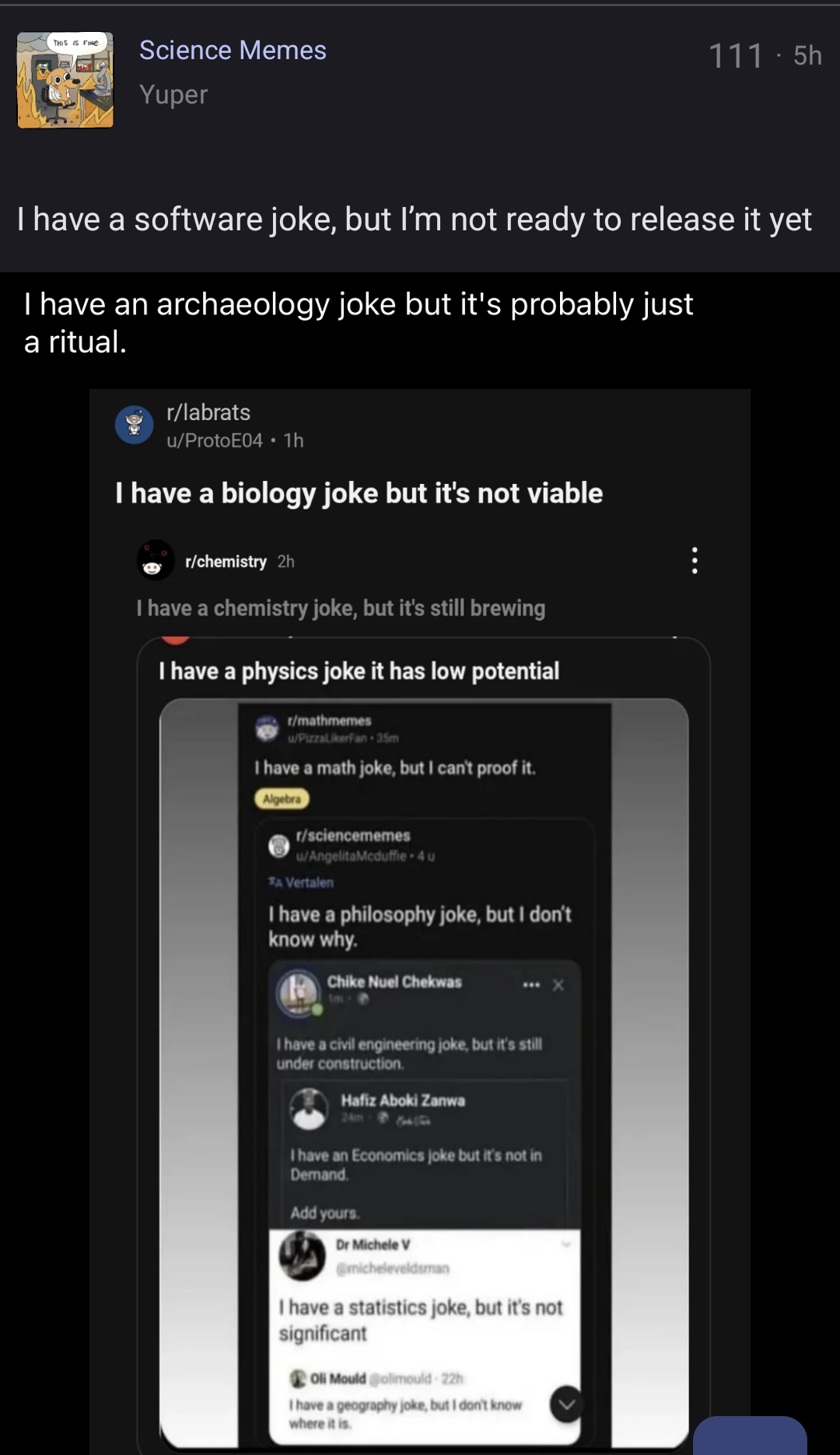People have done that https://sprudge.com/shock-portland-man-sells-human-poop-coffee-on-craigslist-30242.html
baseless_discourse
Please don't, it is not only a product of colonialism injustice, it is also produced in extremely inhumane manner. To make the matter even worse, the industry consensus is that they tastes terrible.
Related video: https://www.youtube.com/watch?v=pkbuFwHnJQY
I have figured out the problem. Turns out although in ip a, the MAC is the same, yet in the vm, the MAC is different.
As for being assigned the same IP, it is just my stupid router... Getting a new MAC (creating a new VM) fixes the issue.
Sorry, a stupid question.
If the bridge is the primary interface on host, and the homeassistant KVM also uses this bridge, will this cause them to get the same IP again?
Thank you for your patience.
Thank you for the configuration. I wonder, because you have turn dhcp off for the host, will this prevent the host from getting an ip address?
Two of the same MAC address can't exist in the same IP space, else the router can't route packets to them.
Yes, this seems to be my problem, both the host and the vm got the same IP, and I think I cannot send any traffic to either my host or vm. So my router is probably confused, as you suggested.
Is there an issue with using Docker for this?
I forgot to mention this, docker indeed work. However, ha requires a privileged docker running as root, which means ha essentially runs as root on the host.
This is fine on dedicated hardware, but as my server have other infrastructure on there, running ha as root can be a security risk.
Hi, thank you for your reply.
Did you make sure that eno2 is enslaved by br0? When br0 is created, it indeed have a unique MAC, but once it enslaves the hardware, it inherits the hardware address.
I have not tried to get the bridge going with virsh, but I was unsuccessful with the virt-manager ui. And I assume they use the same system?
It is possible I have accidentally disabled some network virtualization kernel component during setup, as I have implemented some mods from secureblue. I will try to reset everything to default, and try again.
Do you have a tutorial for making bridge via virsh that you can share.
From my read, this is not even for marketing, but mainly for feedback to improve framework products. Framework will also have merch packages for the ambassador.
These ambassadors would attend linux conferences anyways, framework just want them to communicate to frameworks when anyone have any feedback.
I am okay with this.
divest has all the graphene hardening and have unprivileged microg, it also runs on a much wider range of devices.
I agree, all they need to make sure is for their own tool to have the same access as everyone else.
According to wikipedia, both Windows and linux have it, and both are open source.
Believe it or not, a lot of companies, no matter how cool and secure their marketing sounds, are just seriously incompetent.

I think modern coffee is judged by how much the tastes reflect its distinct characteristics, which includes physical characteristic of the farm (altitude etc), fermentation process, and roasting process.
It takes a lot of work to produce good coffee, and the end result should let these efforts shine. Acidity, fragrance, and funk are great ways to communicate the life of the coffee to the taster. That is why they are typically the standard to determine good coffee, instead of generic and monotone"smoothness" that is shared across kirkland signature, peets, starbucks, and gas station coffees.